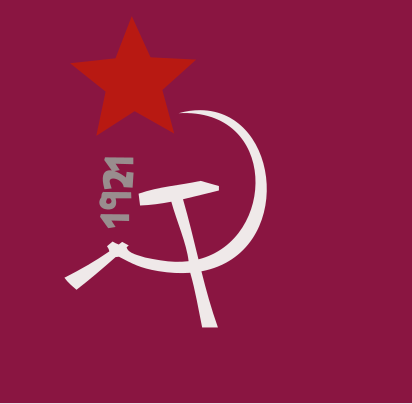A Miner Revolt
The Croatian town of Labin is located in the western part of the country, not too far from the Adriatic Sea. (Here’s a map.) It’s population peaked around 1991 at about 13,000 residents; today, it’s hovering at around 10,000. That’s because Labin is a coal mining town without a coal mine; there were four operating about a century ago, but the last one, located in downtown Labin, closed in 1989. Today, it’s a city in decline.
But for a brief moment in 1921, it was a nation unto itself. Or, at least, the coal miners there wanted it to be.
After World War I, Labin and other parts of what is now Croatia fell under the control of Italy. Fascism was on the rise, particularly in Italy, and in 1919, Benito Mussolini formed the Fasci Italiani di Combattimento (“Italian Fasces of Combat”), a precursor to his National Fascist Party. Supporters of Mussolini forcibly took control of various government-adjacent organizations. Of specific relevance to today’s story, that included the offices of a mining trade union whose members worked at a mine in Labin. Mussolini’s men had, effectively, taken control and ownership of the mine as well. The miners there weren’t fans of Italian rule to begin with, and they definitely didn’t like the fascists telling them what to do. In early March, 1921, that all came to a head.
In Christianity, February 2 is a little-known holiday called “Candlemas,” marking forty days from Christmas. (In some areas, it’s celebrated by finally taking down your Christmas decorations.)The miners, as was their usual practice, took the day off that year to celebrate — but their new fascist overlords hadn’t approved the day off. When their end-of-month payday came, they were expecting a bonus, but that bonus was conspicuously absent. The owners decided that the miners weren’t due the extra pay because they had taken an unapproved holiday. And on March 1, when union leader Giovanni Pipano complained, he was attacked by the Italian fascists and badly beaten.
The miners did not give in to the violence. Instead, on March 2 or 3, they “took control over the mine and organized armed units called the Red Guards,” according to Balkan Insight. They were ready for a fight, and a fight would come — but not before the miners decided to form their own nation.
On March 7, the miners and local peasants who allied with them declared Labin to be a free city-state called the “Labin Republic.” They adopted the flag above and, per LibCom, “they formed a central committee as a decision-making body, with mass assemblies for discussion and complete equality between the different nationalities of worker. They formulated and presented demands to their employer, Societa Arsia, including demanding a pay increase.” Within a few weeks, they resumed mining, with the intent of keeping whatever they mined of themselves.
The mine owners, at first, were willing to negotiate with the miners, but negotiations didn’t get far and their patience was short. In early April, the Italian government stepped in, supporting the mining company. Italy sent around 1,000 soldiers to the mine — easily enough to overwhelm to lightly armed members of the fledgling micronation. By April 8, the Labin Republic ceased to exist and the original owners took back control of the mine.
Two miners died in the attack and more than 50 were arrested, but the arrested ones were not incarcerated for long — according to Working Class History, “because the miners refused to testify against one another, and because of their support from the local population, none were convicted.”
Today, the Labin Republic is celebrated by Croatia. In 2021, on the centennial of the Republic’s founding and dissolution, the Croatian government transformed the area into a multimedia exhibit about the events above, calling it the world’s first anti-fascist uprising, albeit an ultimately unsuccessful one.
Bonus fact: February 2nd isn’t just Candlemas — it’s also Groundhog Day. And the two may be related. Per Wikipedia’s editors, the traditional Candlemas celebration in Hungary is very similar to what we do in the United States for the groundhogs: “Folklore has it that on this day, bears come out of their dens and if they see their shadows (because it’s sunny), they get scared of it and go back to sleep, which is thought to mean that it will be cold again. If, on the other hand, there is no shadow, they stay outside, knowing that this is the last attempt of winter and that the cold weather will soon ease.”
From the Archives: How Long is Groundhog Day?: How many days does Bill Murray’s character experience during the movie? A lot more than you’d think.

